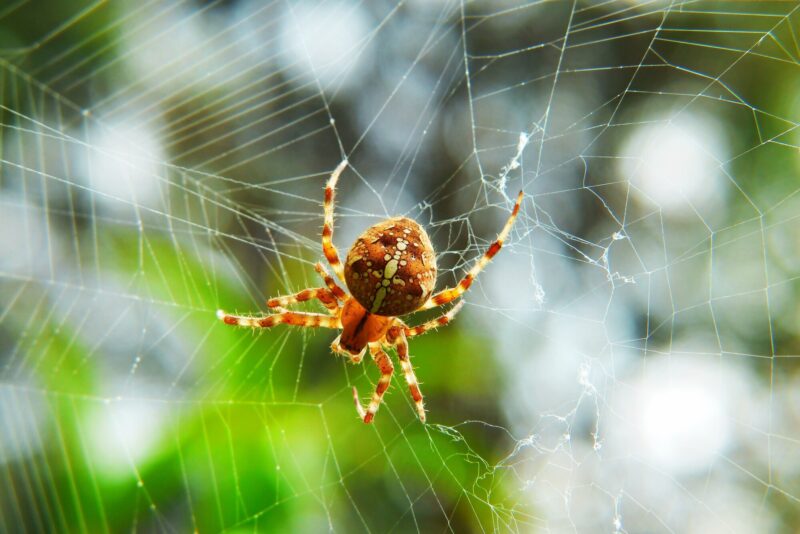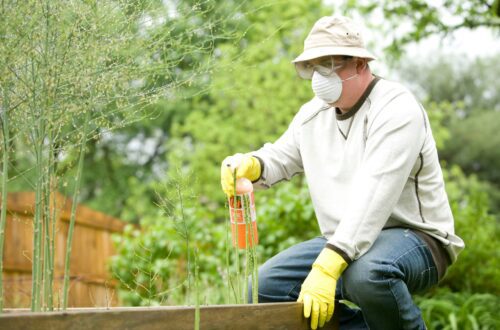Arachnophobia, a debilitating fear of spiders, affects approximately 1 in 3 women and 1 in 4 men. It’s one of the most common fears in the world and likely comes from worries about beating bitten by a deadly, venomous creature.
Even if you don’t have this phobia, you may see a spider in your garden and wonder what it is. Identifying it is the best way to ensure your own safety and protect your garden.
Many common spider species are part of the orb-weaving family also known as garden spiders. Their size and bright appearance make them noticeable, but they’re not the menace you may think they are.
Read our garden spider guide to find out how to identify these creatures, how they’ll affect your garden, and how to remove them if needed.
What Are the Different Types of Garden Spiders?
Garden spiders, also known as cross spiders, are part of the orb-weaving family Araneida. They earned their name from the orb-shaped webs they weave. These include a pattern in the middle known as a stabilimentum that may be used to ward off birds that may destroy the spiders’ work.
There are several types of garden spiders to look for. Most are brightly colored and have distinguishing characteristics that help you tell them apart.
Yellow Garden Spider
Garden spiders are often named after their most prominent colors.
The yellow garden spider has 3 claws on each foot instead of the usual 2 that other spiders have. Females have black abdomens with yellow patches and reddish-brown and black legs and grow up to 0.75-1.1 inches. Males have less yellow coloration on their abdomens and brown legs and are 3 times smaller than females.
These spiders are found throughout the United States, Canada, Mexico, and Central America. They prefer sunny areas and plants that help them anchor their webs. Their webs contain an X-shaped stabilimentum.
Males attract females by plucking their webs. The female places her egg sac on the web. She lays thousands of eggs because her babies are at risk of being eaten by wasps and flies.
Most yellow garden spiders live for a year. Females die when the first frost comes after they’ve mated but can live longer if temperatures allow. Males die after mating because they don’t get enough food while chasing after the females.
Black and Yellow Garden Spider
The black and yellow garden spider, also known as the writing spider, has an oval abdomen. The top features 3-4 black and yellow spots and stripes with 2 vertical yellow stripes on the other side. Their eyes form a trapezoid pattern.
Females have yellow or red and black legs and grow up to 1.5 inches. Males have brown legs with black bands and grow up to 3/4 of an inch.
They make webs of up to 2 feet in diameter with a zigzagging stabilimentum in the middle. They typically only live for a year.
Banded Garden Spider
The banded garden spider is the most common type in the Western United States but can be found throughout the country. Their abdomen is white with bands of yellow and black. The female is larger than the male.
These spiders build webs along an east-to-west axis. They always sit on the webs with their abdomens facing south so they can absorb heat from the sun. The stabilimentum in their webs is similar to the silver garden spiders’ but less prominent. They only live for a year.
If you’re not sure whether the creature you’ve spotted is a garden spider or another, more dangerous species, consult a professional or a guidebook. Identification is the first step towards safety and a healthy garden.
Are Garden Spiders Dangerous?
Stop to identify the spider in your home or garden before squashing it or running for the hills. While there are a few venomous species, most are harmless.
All garden spiders, including the black and yellow, banded, and writing spider, are not aggressive creatures. They tend to avoid humans and will likely stay on their web or run to the nearest hiding place if they see you.
If a garden spider does wander onto your hand, you don’t have to worry because their bites aren’t dangerous. They inject venom into their prey, but it doesn’t harm humans unless they’re sensitive to it.
Squashing a garden spider removes one of the best natural helpers you can have in your garden. They eat pests such as grasshoppers and katydids.
What If I Need Garden Spider Removal?
Garden spiders aren’t a dangerous menace, but there are reasons you may need to have them removed.
As their name suggests, a garden spider would rather be outside where they can weave their webs on low-hanging shrubs and plants. They do occasionally wander into homes and may get stuck, requiring a professional to get them out.
They give birth to thousands of young at once. While most of them get eaten by birds and insects, they may eventually overrun your garden and need to be removed.
Spiders aren’t able to determine the difference between a pest and a pollinator. They also eat bees, butterflies, and other important species. If their diet is keeping your garden from growing, you may have to take drastic measures.
Hiring a professional is the best way to ensure that unwanted insects stay out of your garden and home. It may be necessary when you have garden spiders, but it’s especially important if you notice the presence of a more dangerous, venomous species.
Ask for a spider removal quote from Pest Extinct. Their thorough process will ensure that you and your family are safe from any 8-legged pests.
Where Can I Find More Gardening Tips?
There are several species of garden spiders that are distinguishable by their markings and coloration. They’re not aggressive or dangerous. Seeing one may even a good sign because they help control pest populations.
If you do need help removing spiders from your home or garden, hire a professional. They’ll remove all the offending creatures and ensure they don’t come back.
identifying pests is an important way to keep your plants safe. Read the rest of our content for more tips on how to help your garden thrive.






